13/438 Sergeant Raymond Reynolds Carr Rollett
Auckland Mounted Rifles
By Robert Simpson 2024
 Raymond Reynolds Carr Rollett was born on 2 October 1888 at Sumner, a son to William Carr Rollett and Helena Annie Woodhouse. Sumner is a coastal seaside suburb of Christchurch. He was one of five children to them. William had been born in Thorne, Yorkshire, England on 1 June 1856 and Helena was born in Doncaster, Yorkshire, England on 11 March 1861. He married Helena on 9 September 1885 at Amberley, Hurunui, Canterbury, New Zealand. Raymond’s surname is spelt Rollitt on New Zealand BDM with the listing under Births as 1888/9337 and also only showing his first two names, with his parents listed as Raymond Reynolds and Helena Annie Rollitt. William passed away on 21 January 1930 and is buried in Hamilton East Cemetery in plot BB-B-27. There is no grave marker. Helena passed away on 23 March 1946 in Auckland and was cremated at Waikumete Cemetery & Crematorium.
Raymond Reynolds Carr Rollett was born on 2 October 1888 at Sumner, a son to William Carr Rollett and Helena Annie Woodhouse. Sumner is a coastal seaside suburb of Christchurch. He was one of five children to them. William had been born in Thorne, Yorkshire, England on 1 June 1856 and Helena was born in Doncaster, Yorkshire, England on 11 March 1861. He married Helena on 9 September 1885 at Amberley, Hurunui, Canterbury, New Zealand. Raymond’s surname is spelt Rollitt on New Zealand BDM with the listing under Births as 1888/9337 and also only showing his first two names, with his parents listed as Raymond Reynolds and Helena Annie Rollitt. William passed away on 21 January 1930 and is buried in Hamilton East Cemetery in plot BB-B-27. There is no grave marker. Helena passed away on 23 March 1946 in Auckland and was cremated at Waikumete Cemetery & Crematorium.
Their first child was Margaret Winifred Rollett, born on 24 February 1887 at Hororata, Selwyn, Canterbury, New Zealand. She married Guy Rupert Evans in 1922 in Hamilton. Guy had been born on 11 October 1892 in Christchurch. In the 1941 electoral roll they were living at Weraroa Road, Levin and he was an agent. She passed away on 19 March 1971 in Christchurch and he died on 16 December 1973 in Levin, New Zealand.
Harold William Carr Rollett was born on 18 March 1892 at Ashburton, Canterbury, New Zealand, again surname spelt Rollitt. He is listed in a site, ‘British Families in Southern Patagonia’, as Harold William CARR-ROLLITT with a biography of ‘b. 1891 New Zealand; son of William CARR ROLLITT & Elena Annie WOODHOUSE; sheep-farmer at Cerro Castillo, Ultima Esperanza; later, farmer at Ea. La Luchita, near Tres Lagos, Santa Cruz; later, settled in Puerto Santa Cruz; sold farm products, insurance, Ford cars; d. 1969 Buenos Aires.’ He married Cecilia Melville Cater in 1916 in Punta Arenas. She had been born in 1894 and died in 1960 in Buenos Aires. He then married Blanche Ridley. There are no other details on her. A note with the records at the museum state he ‘went to Argentina for 49 years and owned a 50000 acre sheep property.’
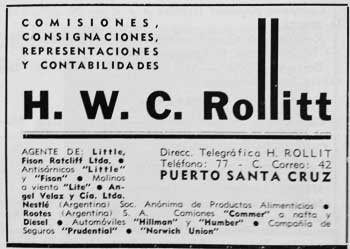

An advertisement in the newspaper Ovina in 1941 and a picture of him.
Frederick (Derick) Guy Rollett was born on 19 Oct 1896 at Christchurch, New Zealand. He enlisted on 20 September 1916 as Private 33515 with the 3rd Battalion Canterbury Infantry Regiment. Frederick was 19 years and 11 months old, was 5 foot 11 inches tall and had a dark complexion with grey eyes and brown hair. He was gassed on 16 October 1917 and was sent to England to the Royal Victoria Military Hospital. He convalesced at Netley Hill. Derick was classified unfit for service by a Military Board in February 1918 and was sent back to New Zealand, where he was discharged at Wellington on 12 April.
Derick married Doris Dive (1898-1998) in 1936.
He passed away on 17 July 1992 in Auckland and was cremated at Purewa Cemetery.
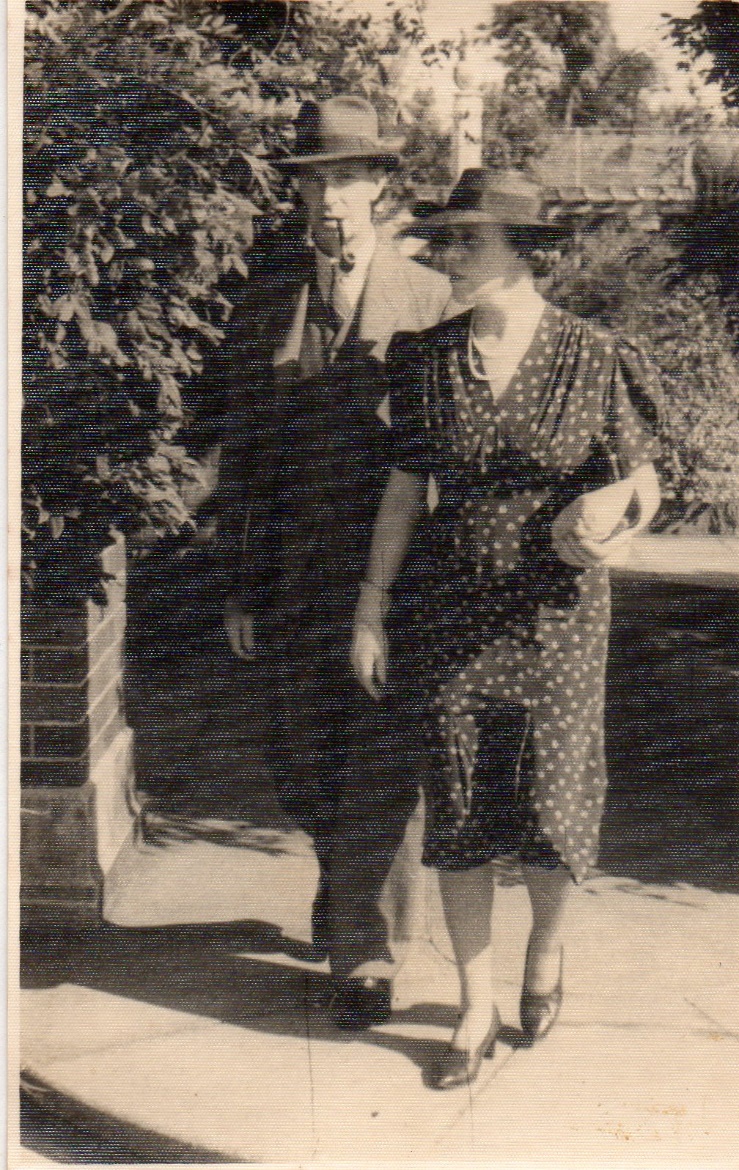
Derick and Doris about 1936.
Norman Carr Rollett was born on 27 Jul 1890 in Ashburton, Canterbury, New Zealand. In the 1911 electoral roll he was living at Matanuku, Lichfield and was a farm hand. All their surnames were spelt Rollitt. The same details for him were recorded in the 1914 roll.
He enlisted in September 1916 as 33516 Private with the 22nd Reinforcements Special Company Signal Section. In England he was transferred to the 3rd Battalion Canterbury Regiment in the field in November 1917. After spending some time in hospital in December 1917, a medical board determined he had chronic gastritis and astigmatism, both due to active service and he was unfit for service in March 1918. He served overseas for 1 year and 28 days, being discharged on 12 April 1918. His medals were the British War and Victory Medals.
He died on 7 May 1963 at Te Pahu and is buried in Hamilton Park Cemetery.
On 18 December 1909 Raymond was issued a Competitor’s Season Ticket for the New Zealand Athletic Union with his address as Wayson and description as eight 5 foot 9 inches and complexion as fair.
Raymond enlisted on 11 August 1914. He was recorded as being a farmer and had not been an indentured apprentice. His father was recorded as his employer at Canterbury. He did record he had previous military experience. Raymond was described as being 25 years and 10 months old, height 5 foot 9 inches, weight 150 pounds, a chest measurement of 32 to 37 inches and of dark complexion with grey eyes and black hair. His religious profession was Anglican. He had a slight scar on his forehead. His medical examination showed he was fit and had no issues to interfere with the efficient performance of his duties. He enlisted with the Auckland Mounted Rifles, Machine Gun Section.
In his attestation form Raymond joined the Auckland Mounted Rifles. He was born in New Zealand and was a British subject. His date of birth was 2 October 1888 and he was a farmer. Raymond had not been apprenticed. Matanuku Downs Tokoroa Putaruru was his address. He had passed the Fourth Educational Standard. William Carr Rollett of Canterbury was his current employer. He was not married, had not been imprisoned and was not currently serving. His previous service was recorded as shown below with his discharge due to change of residence. Raymond had not been previously rejected for military service and was willing to be vaccinated and serve overseas. He signed it at Hamilton on 11 August 1914. His description on enlistment stated his age was 25 years and 10 months, height 5 foot 9 inches, weight 150 pounds, chest measurement 32 to 37 inches, and he had a dark complexion with grey eyes and black hair. His religion was Anglican and for distinctive marks he had a slight scar on forehead. With the medical examination, he had normal vision, hearing and colour vision. He had no issues apart from his teeth, which were fair and had no vaccination marks. He was signed off, fit for service. His medical history record showed the same details.
Raymond wrote a series of letters (of which the museum has some), the first one to his father (addressing him as ‘Dear Boss’) on 6 August 1914 in which he discussed giving both his parents power of attorney and being loaned some money to clear up his accounts. Most of the other letters are written to his mother, addressing her as ‘Dearest Mother Gumph’. He wrote 15 letters to her during the rest of 1914, mainly from various camps he was in in New Zealand, on a ship waiting to sail, and then from Tasmania, Albany and at sea. In them he describes life in the camps and notes he was in the Mounted Machine Gun Section and how busy they were. Raymond did not have a kind word for ‘these muddling Territorial officers things are already in a mixup; the infernal idiots are drawing on us for horse picquets & we look after other troops horses…’ A note was added to one letter ‘Have been offer (sic) acting N.C.O. stripes but declined.’ In the letters he talks about his horse, ‘The Beetle’. When the battalion was embarking to sail, he sent his mother a telegraph letting her know he was departing as shown in the copy below. In late November he mentions in a letter that he hopes ‘that Norman has recovered from his accident’. While at sea he describes the convoy with mention of the Syndey, Melbourne and a Japanese battleship. At Egypt, he was discussing going to Marseilles and then to the front. He only wrote one letter to her in January 1915 and one in February 1915 from Cairo. He wrote 2 letters in February one in May and one in June to his ‘Aunt Lu’. The letter on 7 May says they are going to Alexandria and then off to the Dardanelles, dismounted, and it would be his ‘last opportunity to write for a while’.
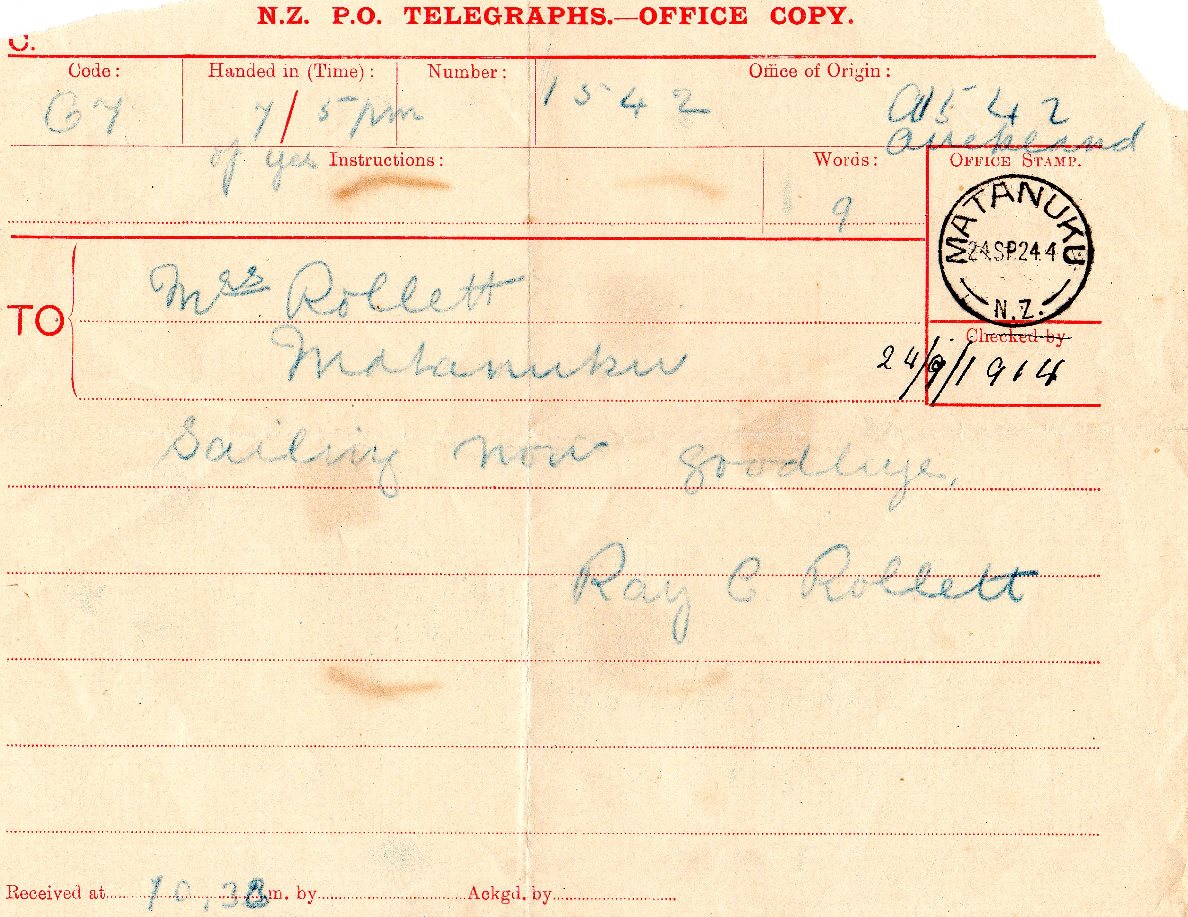
He is listed in the ‘Alphabetical Roll of the New Zealand Expeditionary Force, 1914’ as Trooper 13/438 Raymond Reynolds Carr Rollett of the Main Body Draft, with the Auckland Mounted Rifles. Raymond was single, with his last address of Matanuka Downs, Tokoroa, via Putaruru. Auckland was listed as the Military District and his next of kin was W Rollet (sic) of the same address. The battalion was raised in August 1914 and trained until late September. He left New Zealand on 12 October 1914 and arrived in Egypt on 3 December 1914. Moving to Cairo by train, they established their camp at Zeitoun. The following months they practised horsemanship, small arms and bayonet training and learned to construct trenches. He was sent to hospital on 2 February 1915 with influenza, which was recorded as mild, and had recovered by 9 February. In May 1915 they moved to Gallipoli, moving to the area at Walker’s Top and The Nek. On 19 May they defeated a Turkish attack on their trenches, at a cost of nearly 50 wounded or dead. They moved in and out of the trenches over the next few months.
A copy of his will, dated 27 May 1915, and said ‘in the event of my death give to Wm. Carr Rollett all money and effects’.
Raymond was promoted to Corporal at the Dardanelles on 7 July 1915. He was admitted to No 2 Stationary Hospital on Mudros on 25 July 1915 with pyrexia, was transferred to Base on 31 July 1915 and returned to duty with the Auckland Mounted Rifles at the Dardanelles on 13 August 1915. A hospital record records that he had influenza for 9 days and it was mild and he recovered. While recovering he was promoted to Sergeant on 20 August 1915.
In August an advance was proposed against Sari Bair system to cut off the Turkish Army with the New Zealand troops taking the main thrust. The Auckland Mounted Rifles were to clear the Turks from Old No 3 Outpost, Big Top Table beyond it, to the right Destroyer Hill and to the left Bauchop’s Hill. It was to be a surprise attack without artillery on 6 August. They took and held Old No 3 Outpost for 3 days, repelling many Turkish attacks, but at a huge cost, with only 66 of the 310 men being relieved then. Some of the New Zealand troops reached the crest but then were halted by Turkish artillery and machine guns. On 27 August the survivors, with other battalions, were involved in an attack on Hill 60 where they suffered heavy casualties and had to fight off several counter-attacks.
A history of the Auckland Mounted Rifles is recorded here: – https://nzhistory.govt.nz/page/1915-auckland-mounted-rifles-regiment

The story of his demise is in his service record as a typed statement, which was sent to his father, is shown below: –
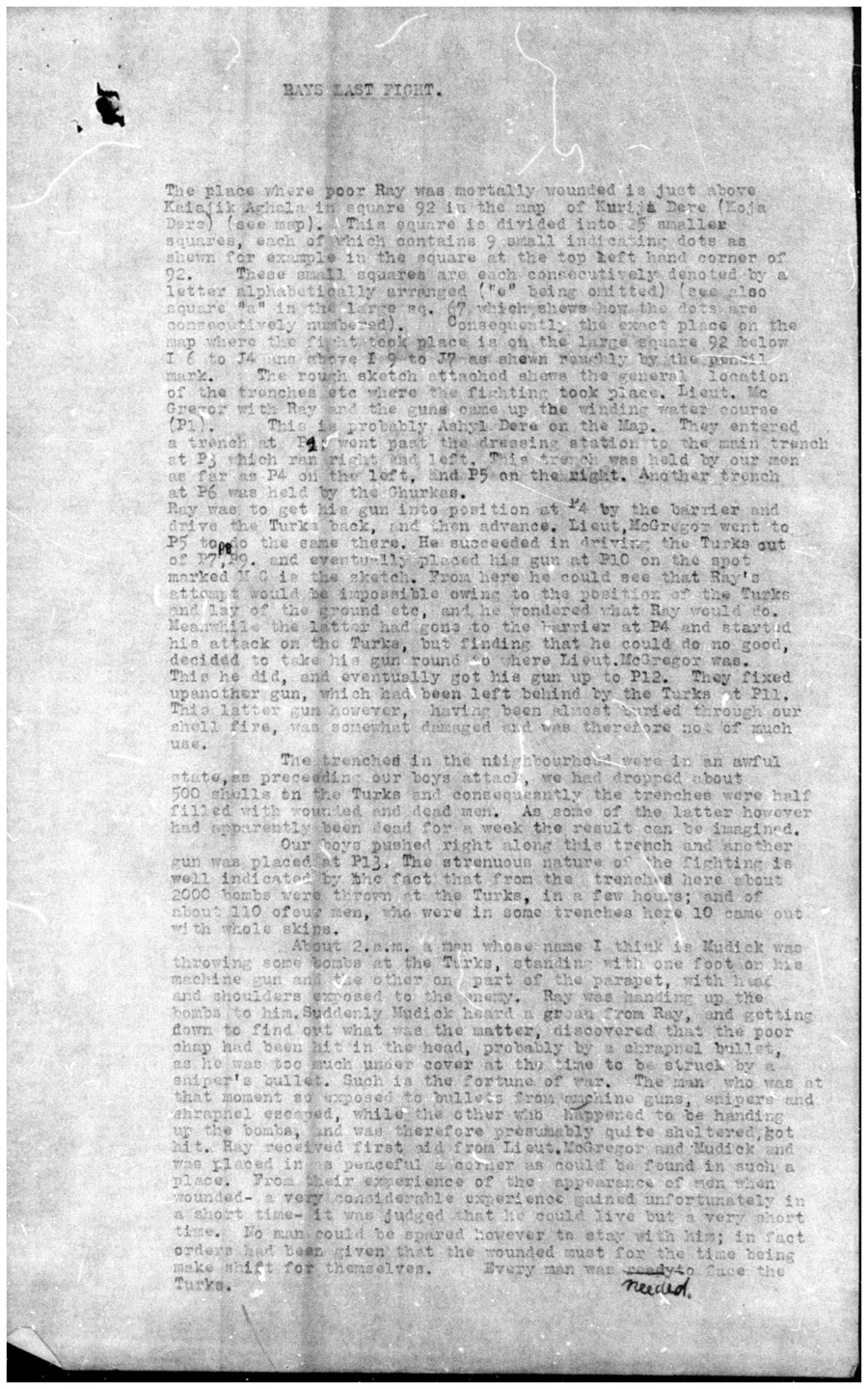
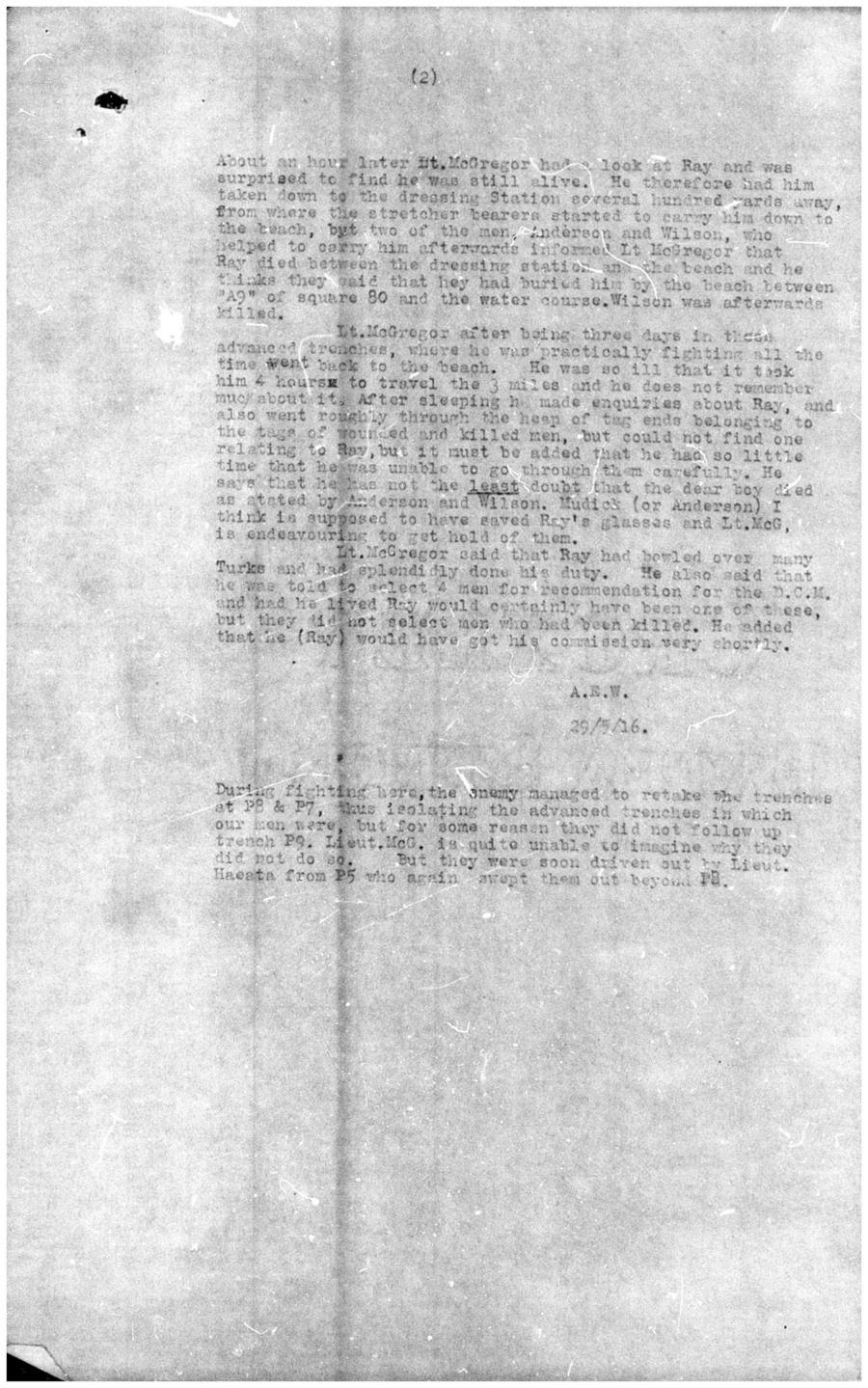
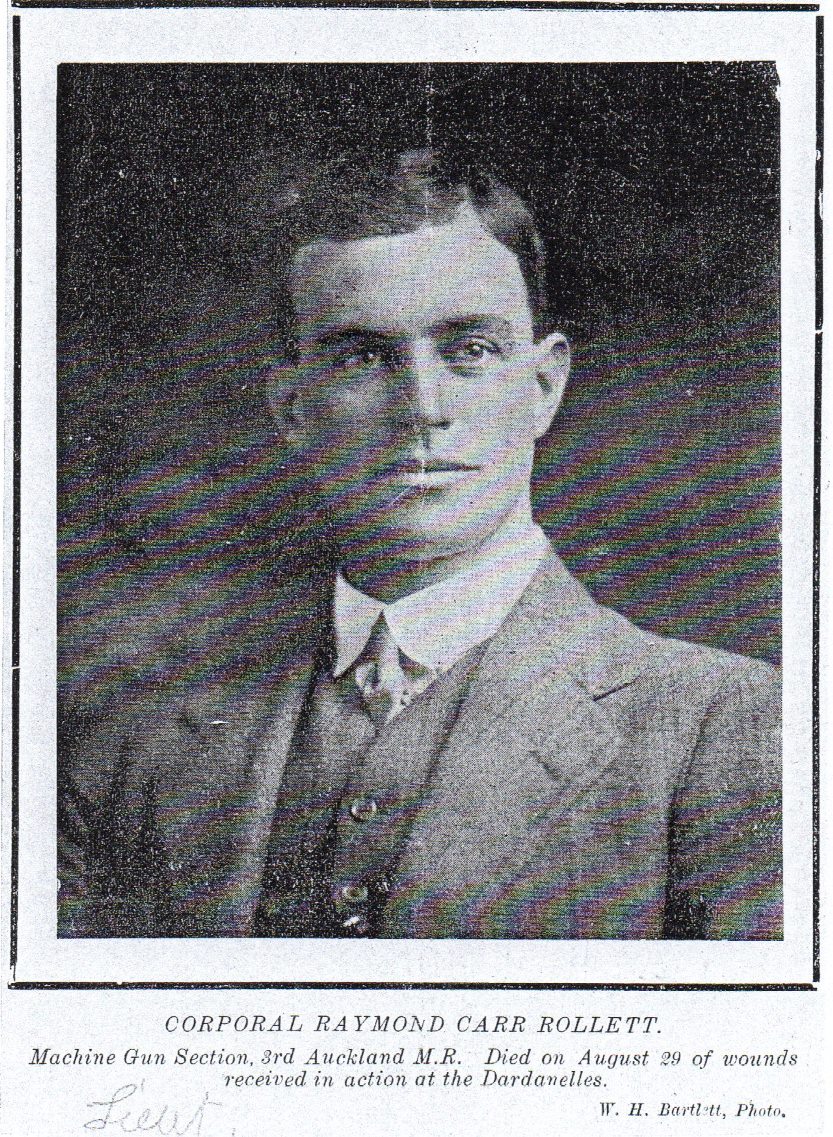
Raymond died of his wounds (recorded as a GSW to the head) on Sunday 29 August 1915 on board H.M.H.S. Devanha, and he was buried at sea between Anzac and Mudros.
An officer of the regiment also wrote a letter to his father from 13 Lewis Crescent, Brighton in Sussex on 4 November 1915. It was recorded in the Waikato Times, Volume 86, Issue 13094 of 31 January 1916 in Page 7 as
SERGT. ROLLETT’S DEATH
ALONE WITH MACHINE GUN.
EXCEEDINGLY POPULAR OFFICER.
In response to a request by his parents, Mr and Mrs H. A. Carr Rollett, of Putaruru for some particulars of the death of their son, Sergt. R. R. Carr-Rollett, who left with the A.M.R. Machine-gun Section, Main Body, the New Zealand High Commissioner, made enquiries amongst wounded New Zealanders in England, and Sergt. Rollett’s parents have now received the following letter from Lieut. Walter Haeata, of the A.M.R.:
“Dear Sir,-The O.C. Records. N.Z.E.F., has informed me that you were seeking information re Sergt. R. R. Carr-Rollet, and he asked me to write to you about him. On the night of the 27th August we had made an attack on a hill occupied by the Turks. After we had driven them off they commenced to counter-attack time after time, and I was making a round of inspection of our new position when I came across Sergt. Rollett working one of our machineguns by himself, the rest of the gun crew all being killed or wounded. I spoke to Sergt Rollett, and told him as soon as I could get reinforcements I would send some men up to him. He replied quite cheerfully that he was all right and thoroughly enjoying the night’s entertainment, and he had got a very good bag of Turks. I conversed with him for several minutes, and left him. During the night the Turks tried to recapture the hill, and attacked us about six times, and it was in one of these rushes that Sergt Rollett was unfortunately shot in the head and died almost instantaneously. We buried him next morning amongst the trenches. In our military maps, (later issue), the place where he is buried is Knoll 60, Kaiajikaghala. I should like to mention that the officers of the Auckland Mounted Rifles thought a lot of Sergt Rollett, and about a week previous to the date on which he was killed, I, as Acting-Adjutant, had recommended him for a commission in one of the armies now being formed in England, and felt sure he would have obtained one without any difficulty.” Other letters we have received from time to time have mentioned Sergt. Rollett was an exceedingly capable and highly respected and popular officer. In a letter published on Friday in our columns. Lieut McGregor referred to Sergt Rollett’s death.’
In the New Zealand WW1 Army Roll of Honour, he is listed as 13/438 Sergeant Raymond Reynolds Carr Rollett M.I.D. with is unit listed as A.M.R., and the particulars of casualty recorded as ‘Died of wounds at sea x Gallipoli, 29/8/15’. He is remembered at Lone Pine Cemetery and Memorial on Gallipoli on Panel 71.
On 13 November 1917 the Minister of Defence wrote to Mr W Carr Rollett of Matanuku Downs, Tokoroa, Putaruru, saying ‘In reply to your letter of the 3rd instant, my Department’s records show that your son – 13/438, Raymond Reynolds Carr Rollett was mentioned in Sir Ian Hamilton’s Despatches in December, 1915 for meritorious services rendered in connection with the Gallipoli campaign. I have instructed the Director of Base Records to communicate with Lieut. McGregor with a view to obtaining a statement from him on the subject. When this is received I will refer the matter to General Sir Alex. Godley for his report. The enclosures which accompanied your letter will be retained in the file in the meantime. Your other son – 33575. Derrick Carr Rollett was gassed on October 16th. He was not wounded in the ordinary sense but for official purposes soldiers who are gassed are classified as wounded. I regret I cannot give you any further information respecting him at present but a progress report should be received shortly. In the meantime I do not think you need be unduly anxious as to his condition.’
A certificate of his death was sent to Messrs Buddle, Richmond and Buddle of 6 Wyndham Street Auckland on 13 September 1915. It reads that 13/458 Corporal Raymond Reynolds Carr Rollett of the Auckland Mounted Rifles, New Zealand Expeditionary Force, died of wounds received in action at Gallipoli on the Twenty-Ninth day of August 1915.
In a list of ‘CASUALTIES. Sun (Christchurch), Volume II, Issue 506, 23 September 1915, Page 8 AUCKLAND MOUNTED. (August 29.) Rollett, Raymond Reynolds Carr, corporal.’
‘NEW ZEALAND’S ROLL OF HONOUR. New Zealand Herald, Volume LII, Issue 16030, 23 September 1915, Page 9 DIED OF WOUNDS. AUCKLAND MOUNTED Rifles. Raymond Reynolds Carr Rollett (Corporal)-W. Rollett, Matanuka Downs’.
He is mentioned under the heading ‘MEN WHO HAVE FALLEN New Zealand Herald, Volume LII, Issue 16031, 24 September 1915, Page 9 CORPORAL R. CARR ROLLETT. Corporal Raymond Reynolds Carr Rollett, who died of wounds on August 29 was the eldest son of Mr. William Carr Rollett, of Matanuku Downs, near Lichfield. He left New Zealand for Egypt with the first contingent, in the machinegun section of the Waikato Mounted Rifles, and was among the first of the mounted men in Egypt to volunteer for service on Gallipoli. He was born in Canterbury and was 26 years old at the time of his death. He received his first military training in the Christ’s College Rifles, and later was for some time, in the Amuri Mounted Rifles. He became chief scout to his section and gained his corporal’s stripes some months ago. He was an exceedingly fine horseman and rode frequently in hunt club and cross-country races He took with him to Egypt his horse. The Beetle, caught wild on the Tokoroa Plains, and broken in by himself to a most useful and capable hack. After finishing he education in Christchurch he joined his father on their sheep-run in Otago, but about five years ago came up to Auckland when his father bought a large block of land in what is called the Pumice Country. Corporal Rollett took an active part in the work of transforming this class of land to useful farming purposes, and his knowledge of modern agriculture and stock made him a very valuable member of the pioneer community, in the Matanuku district.
Also, under ‘WAR ON TURKEY. Sun (Christchurch), Volume II, Issue 509, 27 September 1915, Page 8
CORPORAL R. CARR ROLLETT. Corporal Raymond Reynolds Carr Rollett, who died of wounds on August 29. was the eldest son of Mr William Carr Rollett, of Matanuku Downs, near Lichfield. He left New Zealand for Egypt with the first contingent in the machine-gun section of the Waikato Mounted Rifles, and was among the first of the mounted men in Egypt to volunteer for service on Gallipoli. He was born in Canterbury, and was 26 years old at the time of his death. He received his first military training in the Christ’s College Rifles, and later was for some time in the Amuri Mounted Rifles. He became chief scout to his section, and gained his corporal’s stripes some months ago. He was an exceedingly fine horseman, and rode frequently in hunt club and cross-country races. He took with him to Egypt his horse. The Beetle, caught wild on the Tokoroa Plains, and broken in by himself to a most useful and capable hack.’
On 21 September 1916 a newspaper recorded ‘21st Reinforcements Carr-Rollett, D – Tokoroa; Carr-Rollett, N – Tokoroa.’ In another newspaper on 15 November 1917, it recorded ‘ROLLETT A cablegram – stating that Dereck Carr ROLLETT was wounded and gassed in France on 16 October. Owing to some mistake this name appeared in the casualty lists as D CARR. He is the youngest son of Mr Wm Carr Rollett of Matamuku Downs, Tokoroa and joined the 22nd Specialist Corps but transferred to the infantry. Mr Rollett’s eldest son Ray was killed at Gallipoli. The third son Norman, who was also in the NZ Expeditionary Forces, is in an English hospital recovering from an attack of pneumonia.’
His Mention in Despatches was recorded in the London Gazette of 28 January 1916 on page 1210 in connection with the operations described in General I. Hamilton’s despatch dated 11 December 1915. A letter was sent to his father at River Road Hamilton on 19 August 1921, which contained the certificate of the mention in despatches. (See below).
William applied for the payment of the Overseas War Service Gratuity for Raymond in 1920. A letter sent to his father on 15 March 1920 from the War Expenses Office was in reply to his letter to them asking for the Active Service Gratuity and asked two questions which would help them dispose the claim. They wanted to know what his relation to Raymond was, to which he answered ‘father’, and had he ever received a pension as a dependant of the deceased, to which he replied ‘no’ and signed it. In April 1920 they sent his father his pay book and advised him ‘that any balance shown therein has been taken into consideration in the compilation of deceased’s pay account.’
On 29 February 1916 Ewin McGregor wrote to his father saying ‘Your letter of 12th February to hand, . (sic) Sorry I could not answer sooner. Pressure of work. My son’s address is 13/395 B.W.McG. c/o High Commissioner for New Zealand 13 Victoria St. London. SW. My son wrote very nicely of your son. What a fine man he was and how sorry they all were at losing him. He also said he had been recommended for the D.C.M. but they had made it a rule not to give dead men honours. So you have a reason to be proud of your son, who gave his life for his country. My son will soon be fit to take his place again in the firing line. Captain Wallingford is again passed as medically fit for the front, if he is allowed to go back the men will be pleased as he was a tower of strength to them.’
A statement of his service shows he was a Private and promoted to Corporal on 7 July 1915. An attachment to that form records him as a Sergeant and deceased, with his medal posted to his father at Hamilton. The British War Medal was sent on 11 November 1922 and the Victory medal on 21 September 1922. There is no date for the 1914-15 Star. Another attachment shows his plaque and scroll were sent by certified post on 24 October 1922, according to a note on the top of the form, but it states “Scroll despatched (date)’ was 2 August 1921 and the plaque 3 February 1922. They were sent to his father, but the address had changed to Claudelands Hamilton.
The plaque and scroll for him was sent to his father in 1921 and 1922 at Hamilton. His medals were also forwarded to him, they being the 1914-15 Star, British War and Victory medals, with all being completed by 23 October 1923.
Records posted his father the certificate for his Mention in Despatches on 19 August 1921 and sent a letter with it with a receipt to reply with.
A letter written to his father at River Road Claudelands Hamilton on 3 October 1921 reads: ‘In reply to your letter of the 20th September, I have to advise that your son when attesting signed the form “R.R.C.Rollett”, and as the Memorial Scroll was prepared overseas, it will not be possible for me to supply you with another copy showing the name of “Carr-Rollett”. The records show that your son was promoted Corporal on the 7th July, 1915, and Sergeant on the 20th August, 1915. The despatch in which his name was mentioned would no doubt refer to his conduct prior to July, 1915, and therefore the rank of Trooper would be shown upon it. A Plaque issued as a memorial of the services rendered by your late son has arrived in New Zealand and I hope to despatch it at an early date.’
His History Sheet shows Raymond Reynolds Carr Rollett was with the Auckland Mounted Rifles with the service number 13/438. His rank was originally written as Corporal, then crossed out to Sergeant. Church of England was recorded as his religion and he was born in New Zealand on 2 October 1888. His occupation was farmer, with his last employer being Matanuka Downs. That was also part of his last New Zealand address, with Tokoroa, Putaruru added. Mr. W Rollett was his next of kin, at the same address. It was later changed on 20 January 1920 to River Road Hamilton. It recorded he died of ‘wounds at sea 29/8/15 (Received in action)’ and under that in red pen is ‘Died of GSW Head 29.8.15 Gaba Tepe on HS Devanha BR 23/8’. His medals were sent to his father at the River Road address by PMG on 13 January 1921. A sheet attached to that one had information that his rank at death, highest rank and highest rank held in theatre of war were all Sergeant. It also noted that the medal action was completed on 23 October 1923 and had a stamp which showed ‘Egyptian: 1914-1915’ and ‘Balkan {Gallipoli Mudros 1915’. It also recorded he was Mentioned in Despatches by Sir Ian Hamilton in the London Gazette on 11 February 1916. The record showed he served in New Zealand from 11 August 1914 to 16 October 1914 and foreign service from 16 October 1914. It also noted he was buried ‘at sea between Anzac & Mudros’. Another record stated it was on 30 August from the Nominal Roll of Deaths from the Senior Medical Officer on HS Devanha.
A family tree on Ancestry has Raymond attached with Ruth Ann Beaumont Thomson. There is no marriage record, so maybe she was his girlfriend/ fiancée? She had been born on 14 June 1891 in Gisborne, New Zealand. On 10 January 1921 she married Richard James Butt (1897-1986). In the 1916 directory he was a farmer, living at Dipton, Southland. He enlisted in WW1 on 11 December 1917 as Private 76684 with the 42nd Reinforcements D Company, but according to the tree he ‘Contracted Bronchitis aboard the ship on way to England and was hospitalized for the term of his deployment. He was never involved in any conflicts.’ Richard was entitled to the British War Medal. After the war he was a railway labourer. They had four children. Ruth died on 12 July 1982 and is buried in Eastern Cemetery Invercargill.
In the book Honours and Awards to the New Zealand Expeditionary Force in the Great War 1914-1918 he is listed on page 276 as ‘ROLLETT, Raymond Reynolds Carr 13/438 M.I.D. Trooper, Auckland Mounted Rifles L.G. 28 January 1916, p1210 In connection with the operations described in General I. Hamilton’s despatch dated 11 December 1915. D.O.W. at sea ex Gallipoli 29 August 1915’.
His certificate was posted to Mr W Carr Rollett at River Road Hamilton on 20 August 1921 and reads ‘The War of 1914-1918. New Zealand Forces 13/438 Tpr. R.R.R.C.Rollet, Auckland Mtd.Rif. was mentioned in a Despatch from General Sir Ian S. M. Hamilton, G.C.B. D.S.O. A.D.C. dated 11th December 1915 for gallant and distinguished services in the Field. I have it in command from the King to record His Majesty’s high appreciation of the services rendered.’ It was signed by Winston Churchill, the Secretary of State for War at the War Office at Whitehall on 1 March 1919. Lone Pine Memorial at Gallipoli, Panel 71. The museum has the British War and Victory medals to 33515 Private D Carr-Rollett NZEF and the 1914-15 Star, British War Medal and Victory Medal with Oak Leaf attached to 13/438 Serjeant R.R.C. Rollett NZEF. There is also a gold fob which is engraved on the reverse ‘PUTARURU Patriotic Association Presented to Pte. N Carr-Rollett Feb 1919’.
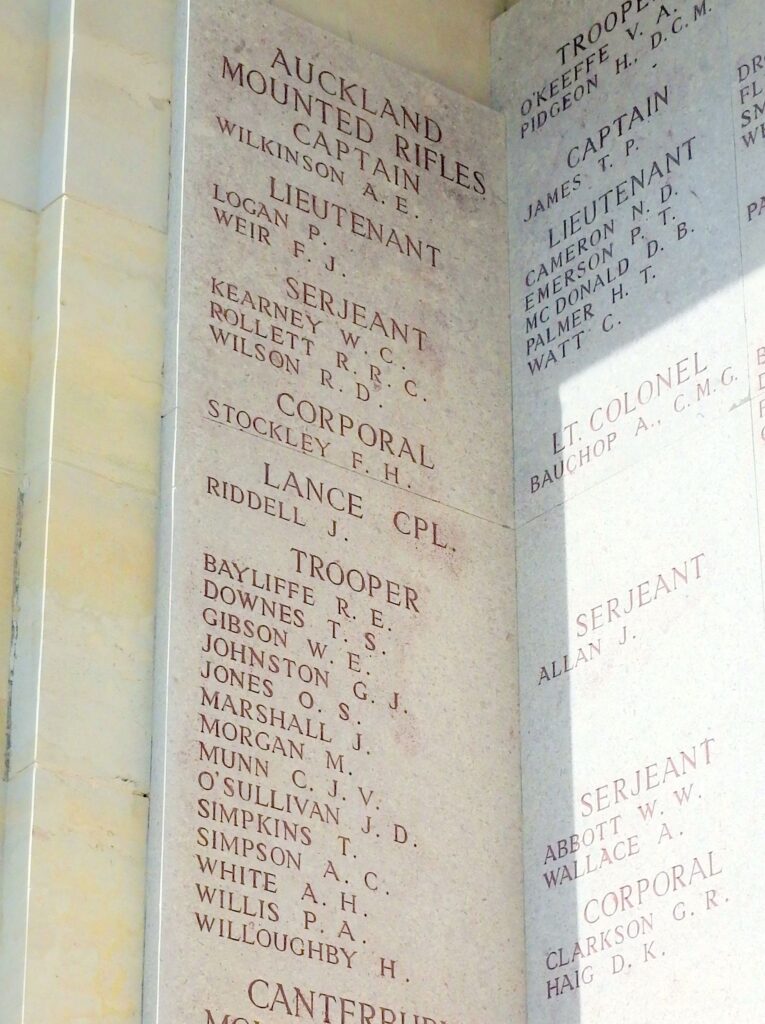
Lone Pine Memorial at Gallipoli, Panel 71.
The museum has the British War and Victory medals to 33515 Private D Carr-Rollett NZEF and the 1914-15 Star, British War Medal and Victory Medal with Oak Leaf attached to 13/438 Serjeant R.R.C. Rollett NZEF. There is also a gold fob which is engraved on the reverse ‘PUTARURU Patriotic Association Presented to Pte. N Carr-Rollett Feb 1919’.

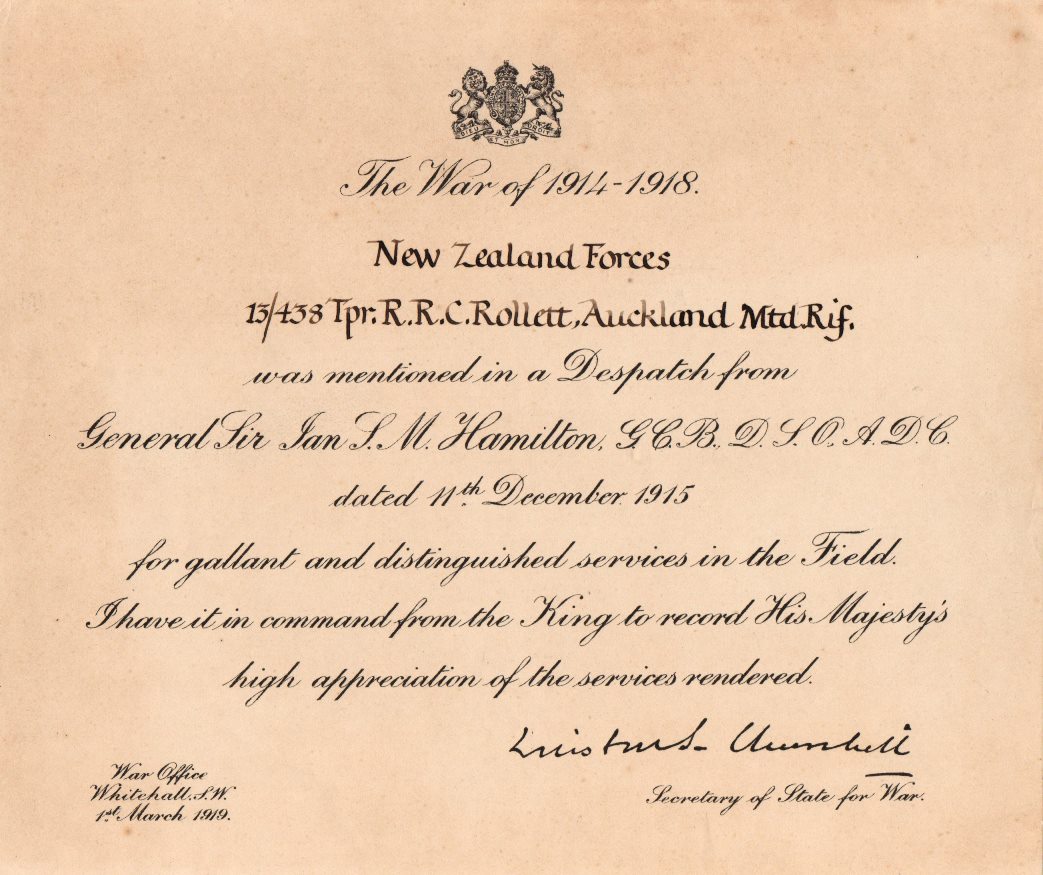
His MID was in the original envelope addressed to Mr W Carr Rollett, River Rd, Hamilton; posted on 21 August 1921.
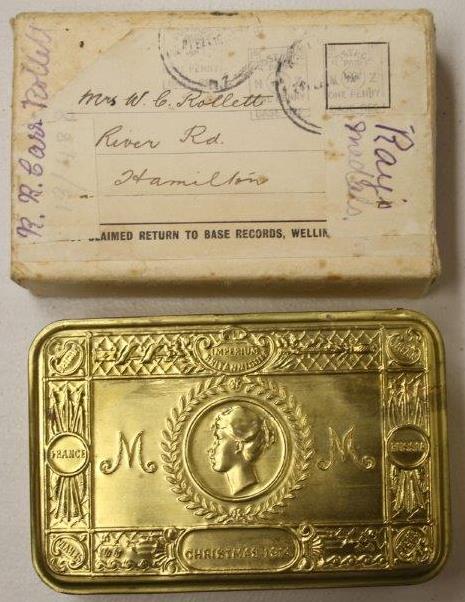
The museum also has other items that have been kept which include these items and photos.
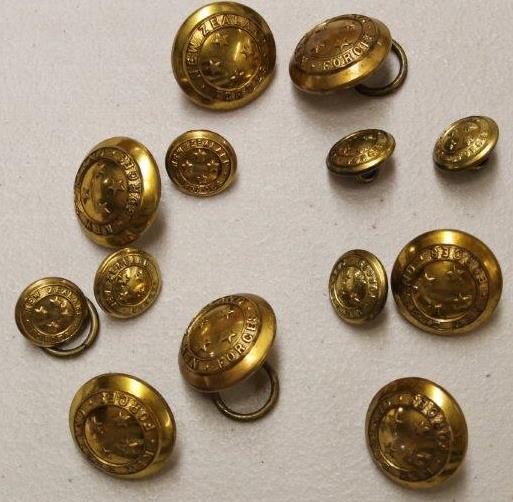
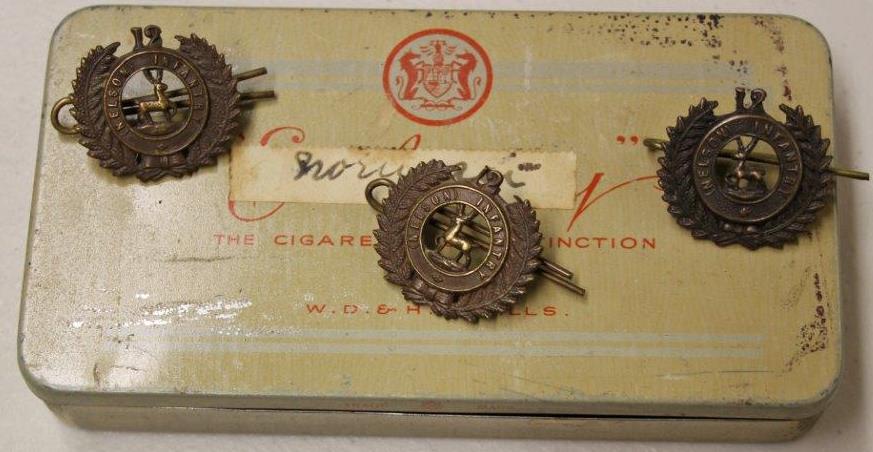
ANZAC Biographies
On our website you will find the biographical details of ANZAC (as well as British) servicemen & women whose medals or other memorabilia form part of the collection on display at the Maryborough Military & Colonial Museum, Maryborough, Queensland, Australia.